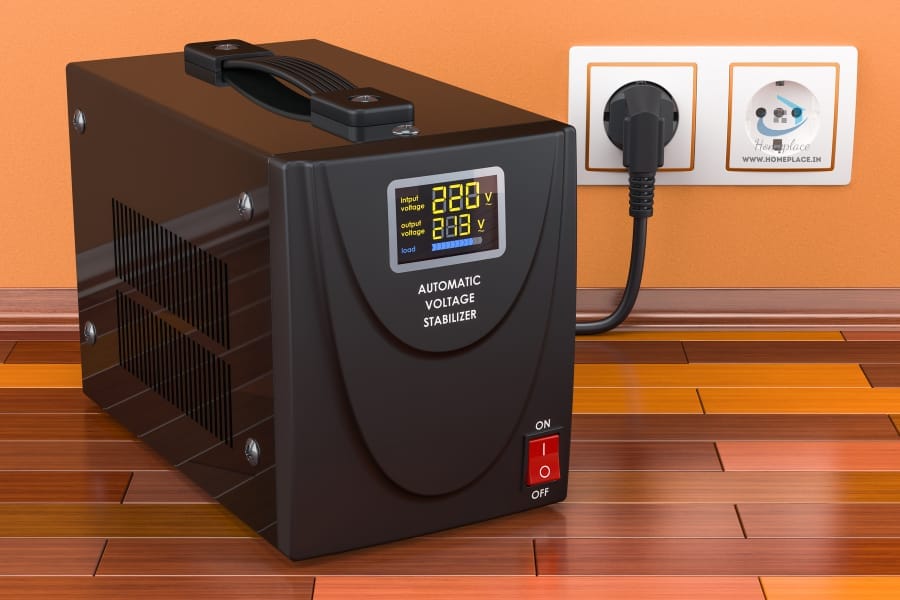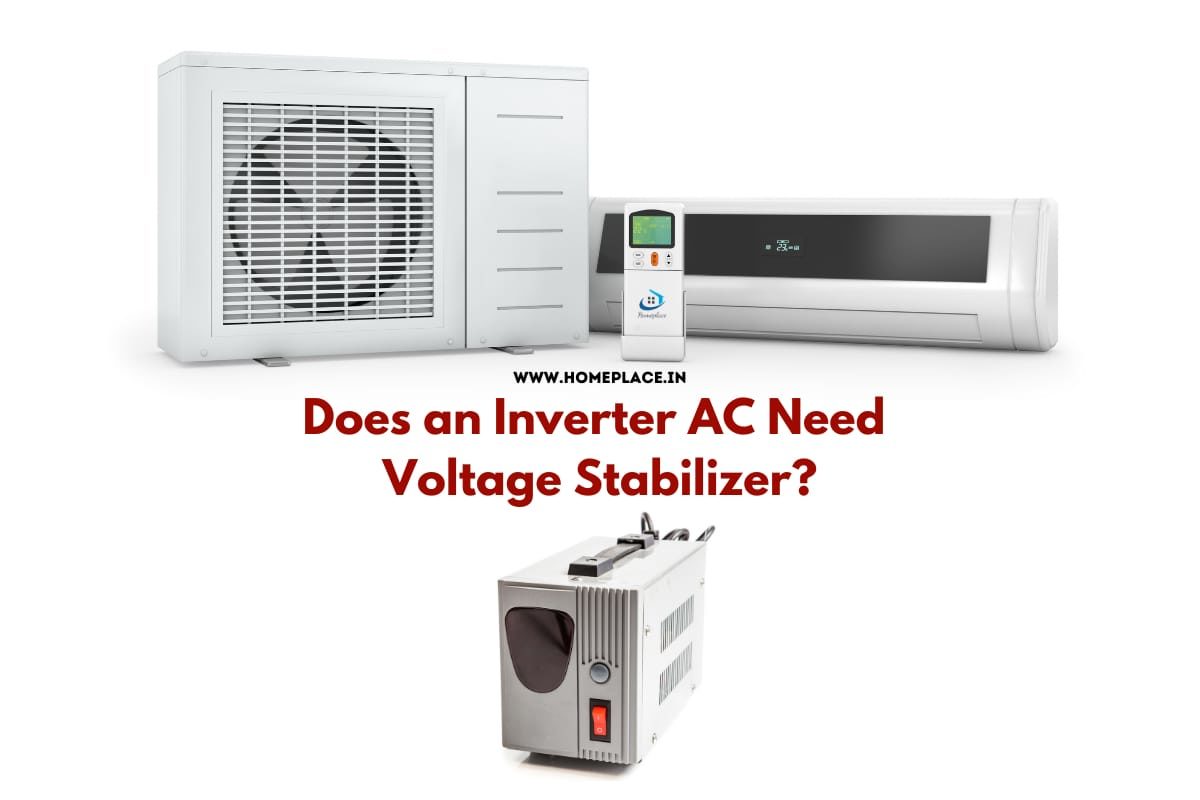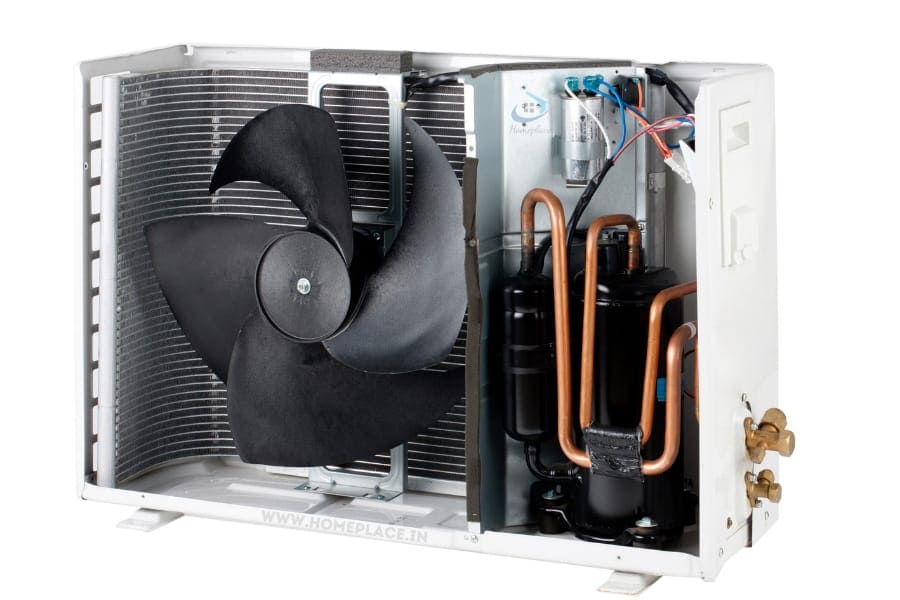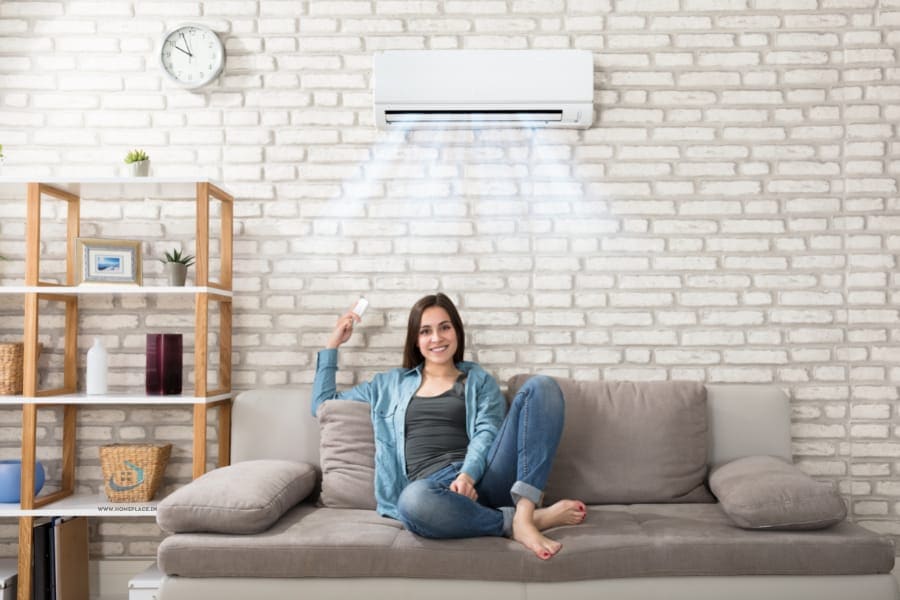Air conditioners arguably are your best friends in the summers. No other appliance can fend off heat waves better than them. However, with advancing technology, more power-efficient ACs (inverter ACs) came into the picture that does not need a stabilizer to run.
Unlike ordinary ACs, inverter ACs work on alternating current, which allows them to draw variable power. They draw power based on conditions such as the temperature level in the thermostat and the incoming air temperature.
So, since inverter ACs only consume the required amount of energy, you may wonder if inverter ACs enable a stabilizer-free operation. In that case, we’ve got you covered.
How Does a Voltage Stabilizer Work?
First of all, stabilizers aren’t meant to provide your appliance with a constant voltage output. Instead, they work actively to keep the energy level within permissible levels. They’re exceptional in protecting the respective appliance from fluctuating power supply. AC voltage stabilizers have sensors that can detect abnormal voltage. Based on the readings, they implement measures to negate the current variations at the earliest.
For example, if the power supply suddenly drops, the stabilizer will immediately boost the voltage and hold it. Likewise, if it suddenly surges, the stabilizer will reduce it to protect the appliance. These operations are called boost and buck operations; we’ll be shedding more light on these in a while. In any case, a power stabilizer actively works to save your appliance.
Behind the scenes, a current stabilizer utilizes various electrical components to do its job. These components include the transformer, rectifier unit, comparators, switching circuits, and relays. A modern stabilizer also involves a capable microprocessor as its control unit. The microprocessor tackles energy fluxes with even better efficacy. What’s more?
Power stabilizers typically consume very little electricity, around 2 to 5% of the maximum load. So, getting a power stabilizer for your inverter AC should be a no-brainer in most cases.

Boost and Buck Operation in Depth
Boost Operation
It is used when the voltage supply is lower than required. In that case, the current passes through a step-down transformer. The transformer is connected in such a way that it adds the secondary output to the primary power supply. The stabilizer achieves this boost in the voltage by switching the corresponding relay. This adds the secondary output to the primary load and thus balances the energy.
Buck Operation
A stabilizer makes use of buck operation in case the power surges beyond a certain threshold. In buck operation, the step-down transformer serves to deduct power from the primary supply.
Besides boost and buck operations, modern voltage stabilizers can also cut off the voltage entirely if things go out of hand. You can just rest assured and let your stabilizer do all the hard work. This small investment of yours can save you thousands of dollars on repairs and replacements. Meanwhile, a current stabilizer also ensures top-notch health for your appliance.

Is Stabilizer Required for Inverter AC?
In general, there’s a straightforward answer to this question: Yes. Inverter ACs need a voltage stabilizer to save the day in case of “severe” voltage fluctuations. Inverter ACs, unlike ordinary ACs, effectively keep the power consumption in check to save energy.
However, this operation can’t save these Air Conditioners from voltage variation beyond a specific range. Voltage stabilizers come in handy when your inverter AC model doesn’t have an S-UTR compressor which is quite likely. If the product does not need a stabilizer, the manufacturer mentions it.
Purchasing a stabilizer for your inverter AC is never a bad investment. It’s worth your money, even if you live in an area that rarely encounters severe voltage fluxes. Voltage stabilizers enable double-layered protection from misbehaving voltage for your expensive inverter AC.
Pros and Cons of Using a Voltage Stabilizer for Your AC
There are always two sides to a coin. No device or appliance is ideal enough to have no cons at all. Stabilizers are no exception; let’s discuss the pros and cons in detail.
The advantages
The limitations
How Does an Inverter AC Work?
An inverter AC, as the name suggests, is a regular AC fused with inverter technology. For starters, an inverter is a device that converts DC (Direct Current) to AC (Alternating Current) or vice versa. So, an AC (Air Conditioner) with inverter technology can optimize its power consumption based on usage.
For example, your inverter Air Conditioner will adjust the compressor’s speed to consume the least possible electricity. This function relies on factors like temperature settings and ambient temperature.

Moreover, the ability to limit the compressor’s speed allows inverter ACs to enable precise temperature control by optimizing the flow of the refrigerant in the cycle. Inverter ACs do not need to entirely stop the compressor when the desired temperature is attained in the room, unlike non-inverter Air Conditioners.
This effective control over the compressor results in dramatic power savings. In contrast, non-inverter ACs have no control over the speed of the compressor. They need to stop/start the compressor based on conditions entirely. This repeated restarting of the compressor in non-inverter ACs alone increases the power consumption by up to 30-40%.
For instance, a 3-star rated inverter Air Conditioner consumes 700 units of electricity per year. However, a non-inverter AC with the same BEE rating will consume more than 1000 units yearly.
Read: Inverter vs. Non-Inverter AC
Here’s How an Inverter AC Meticulously Enables Extreme Power Savings
What is Stabilizer-free Operation in Inverter AC?
Some manufacturers claim their AC doesn’t need an external voltage regulator. But they claim it with a side note that says an external stabilizer is necessary if the voltage fluctuation goes out of a particular range.
If your inverter AC comes with an S-UTR compressor pre-installed, you don’t need to worry about instabilities for the most part. These compressors are immune to power-ups and downs under a specific range as described by the manufacturer. In any case, double-layered protection with an external current regulator is never a bad idea.
How to Connect Your AC to a Voltage Stabilizer?
Please take note that it’s always better to let experts do the hard part. However, if you still want to take it as your weekend DIY project, we’re here to help. Installing and connecting your electrical energy regulator with your AC involves the following steps.
Some Helpful Tips to Connect Voltage Stabilizer and AC
- Turn off the primary switch while the AC is not used to save power. Don’t let the voltage stabilizer run idle for too long, as it can reduce the longevity of the same.
- Avoid overloading your voltage stabilizer. Reduce its load when the output capacity reduces to avoid nasty malfunctions.
- Make sure to only select the voltage stabilizer with more than 3 times the capacity of your AC.
- The wire should be thick enough and should have enough cross-section. This prevents damaging factors like resistance and heat from barging in.
- The load power switch on the voltage stabilizer must remain turned off after connecting all the wires. Switch the load power switch on only after confirming the output voltage is normal. This precaution is essential to follow as a simple burst of high power is enough to break your AC.

What is the Relation Between Stabilizer kVA and AC Tonnage?
The capacity of a stabilizer can be measured in kVAs (Kilo Volt-Amps), and the AC tonnage directly influences it. The kVA of your stabilizer doesn’t solely rely on capacity. Other factors such as the technology of the AC, BEE rating, etc., come into play while deciding the stabilizer with the optimal kVAs.
For instance, for an old window AC of 1.5 tons which draws a current of around 14-16 amperes, a 4 kVA stabilizer is ideal. Similarly, a 1.5-ton split AC with a BEE rating of 3 stars requires a 3kVA stabilizer as the current drawn by the AC is relatively low (10-12 amperes). The higher the efficiency of your AC, the lower kVA it’ll require of the stabilizer.
As for the tonnage, a 2-ton split inverter AC will consume more power than a 1-ton portable AC with the same configurations. Conclusively, the former (2-ton Air Conditioner) will require a stabilizer with a higher kVA.
As a rule of thumb, determine the power rating of your AC and add an extra 20% to the total wattage to determine the kVA needed for your stabilizer. For example, if your 1-ton AC has a 3-star BEE rating and 1kW power rating, a 1.2kVA voltage stabilizer should do the trick.
So, does your inverter AC require a stabilizer? Not always. But is it recommended to use one anyway? Absolutely! How is an investment of a couple of thousand rupees not worth it if it can save your Rs. 35-40k inverter AC?
Furthermore, only an inverter AC with an S-UTR compressor can fight misbehaving voltage levels. Any other type will fail even if the manufacturer mentions stabilizer-free operation for that inverter. It’s inevitable if the variation rises beyond a certain level. So, can your inverter AC protect itself from fluctuating voltage? If yes, then having another robust layer of protection is never a bad idea.
Related Post:
